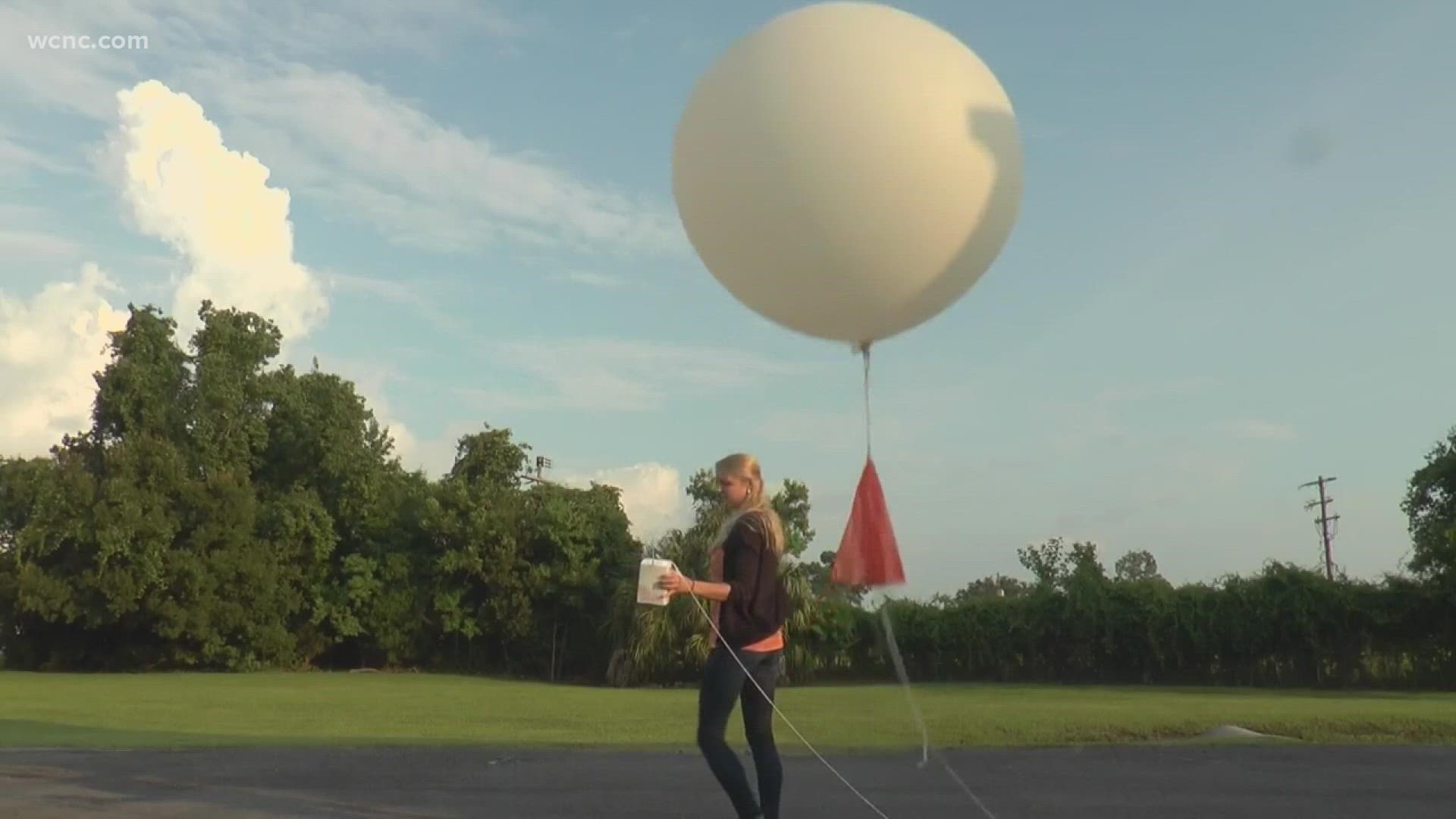CHARLOTTE, N.C. — Weather balloons are a critical tool used by meteorologists to produce accurate forecasts. Due to supply chain issues and a shortage of hydrogen, the National Weather Service (NWS) has announced they are reducing the number of weather balloon launches.
The NWS currently launches weather balloons from 101 upper-air sites throughout the United States and the Caribbean – with 92 of those in the U.S.
Currently, both hydrogen and helium are used to inflate the balloons.
In February, WCNC Charlotte's Brittany Van Voorhees spoke with NWS Greenville-Spartanburg warning coordination meteorologist Trisha Palmer about the pros and cons when it comes to weather balloons.
Hydrogen is cheaper and more reliable. However, one of the big reasons why some sites still use helium is the fact that hydrogen is flammable. Palmer explained that the NWS in Tallahassee, Florida, has its upper-air site on the campus of Florida State University. This limits its ability to use hydrogen.
Now, due to global supply chain issues and a temporary issue with the contract of one hydrogen supplier, the NWS is reducing the number of launches at severe upper-air sites across the country.
According to the NWS, approximately 9% of the total upper-air sites are currently affected by the gas shortage and temporary contract issues -- including five helium sites and four hydrogen sites. This has led them to reduce launches or suspend them during “calm weather days” to ensure gas is available during hazardous weather.
Although they don’t anticipate any impact on weather forecasts or warnings, we know how important these launches are, especially during the spring severe weather season.
In fact, extra launches are occurring Wednesday due to another severe weather outbreak.
Our local forecast office in the Charlotte metro area is NWS Greenville-Spartanburg. Outer portions of the WCNC Charlotte viewing area are covered by NWS Blacksburg, NWS Raleigh, and NWS Columbia.
While Greenville-Spartanburg is not an upper-air site, two of the impacted upper-air sites are nearby: Blacksburg (which covers Ashe and Watauga counties) as well as NWS Greensboro.
While the WCNC Weather Team does not get our forecasts from the NWS, we do use some of the same model data and work in conjunction with them during big weather events.
Full impacted site list
Helium sites:
- WFO Greensboro (GSO) has reduced its flights to once daily.
- WFO Albany (ALY) has reduced its flights to once daily.
- WFO Tallahassee (TAE) has suspended its routine upper air flights.
- WFO New York (OKX) has suspended its routine upper air flights.
- WFO Charleston (CHS) has suspended its routine upper air flights.
Hydrogen sites:
- WFO Pittsburgh (PBZ) has reduced its flights to once daily.
- WFO Buffalo (BUF) has reduced its flights to once daily.
- WFO Baltimore-Washington (LWX) has suspended its routine upper air flights.
- WFO Blacksburg (RNK) has suspended its routine upper air flights.
Why are weather balloons important?
Weather balloons are used to launch radiosondes. These instruments measure temperature, dew point, relative humidity, barometric pressure, wind speed and direction. Then, the data is sent back in real-time, inputted into forecast models, and used by meteorologists around the country for better forecast results.
According to the NWS, data is also collected from instruments aboard commercial aircraft, surface observing stations, satellites, radars, and buoys.
Contact Brittany Van Voorhees at bvanvoorhe@wcnc.com and follow her on Facebook, Twitter and Instagram.

